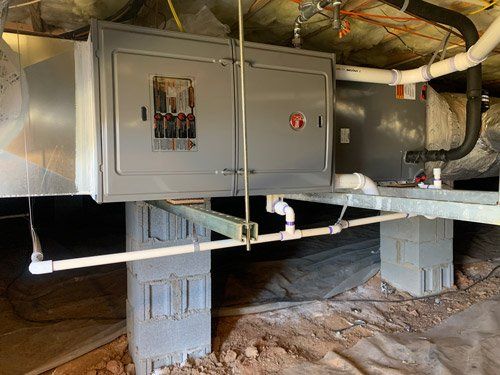The Ultimate Guide to Heating System Installment for a Cozy Home
Heater setup is a critical facet of preserving a comfy home environment, especially during the colder months. As you consider these aspects, the inquiry stays: what steps can you take to guarantee your furnace offers you well for years to come?
Types of Furnaces

Gas heating systems are the most typical option as a result of their efficiency and lower operational expenses. They make use of all-natural gas or propane, supplying fast home heating and regular performance, making them perfect for chillier environments.
Electric heating systems, while usually easier to set up and preserve, have a tendency to have greater functional prices. They are usually preferred in locations where gas solution is unavailable or for homes with existing electric infrastructure.
Oil furnaces, though less common today, remain a practical choice in certain regions. They burn heating oil, which can be advantageous during colder months, but their dependence on oil distribution postures potential challenges.
In addition, there are high-efficiency versions readily available throughout these kinds, which can substantially reduce energy consumption and energy expenses - furnace installation. Ultimately, understanding these heating system types will certainly assist property owners select a system that aligns with their heating needs, budget, and power choices
Selecting the Right Size
Selecting the ideal size for a furnace is crucial to guaranteeing optimal efficiency and energy efficiency. A small heating system will struggle to keep comfy temperatures throughout the chilly months, resulting in increased damage, higher energy expenses, and prospective system failure. Alternatively, a large furnace might cycle on and off too often, leading to inefficient home heating and uneven temperature level distribution within the home.
To figure out the appropriate heater dimension, a computation known as the Guidebook J load estimation ought to be executed. This process examines various elements, consisting of the square footage of the home, insulation degrees, home window sizes, and neighborhood climate conditions. This thorough analysis ensures that the heating system meets the particular home heating demands of the area.

Setup Process Summary
In regards to products, you will certainly require ductwork, insulation, and sealing tape to make sure optimal airflow and power effectiveness - furnace installation. sites It is also essential to have a new heater filter handy, together with venting products, such as PVC pipe or steel flue, depending upon the type of heater being set up
Safety and security tools, including handwear covers, goggles, and a face mask, is additionally essential to secure against dust and particles during installment. Having all these tools and products easily offered not only streamlines the procedure but also boosts the safety and performance of the furnace installment.
Maintenance Tips for Durability
To ensure the durability of your furnace, it is important to apply a routine maintenance timetable that deals with crucial components of the system. Begin by changing or cleaning the air filter every one to 3 months, as a clogged filter can limit air movement and decrease effectiveness. In addition, examine and clean up the blower setting up to stop dirt accumulation that can impede efficiency.
Following, examine the thermostat settings and recalibrate if needed to make certain accurate temperature guideline. Inspect the ductwork for leaks or obstructions, as this can cause power loss and irregular heating. On a regular basis lubricate the motor and bearings according to the producer's suggestions to decrease wear and tear.
Professional assessments must take place each year, where a certified technician can assess the furnace's general problem, check for gas leakages, and ensure that safety functions are functioning correctly. Think about setting up a programmable thermostat to optimize energy use and keep regular home temperature levels. By adopting these upkeep practices, you can enhance your heater's performance, expand its life expectancy, and eventually delight in a comfortable and comfortable home setting.
Verdict
